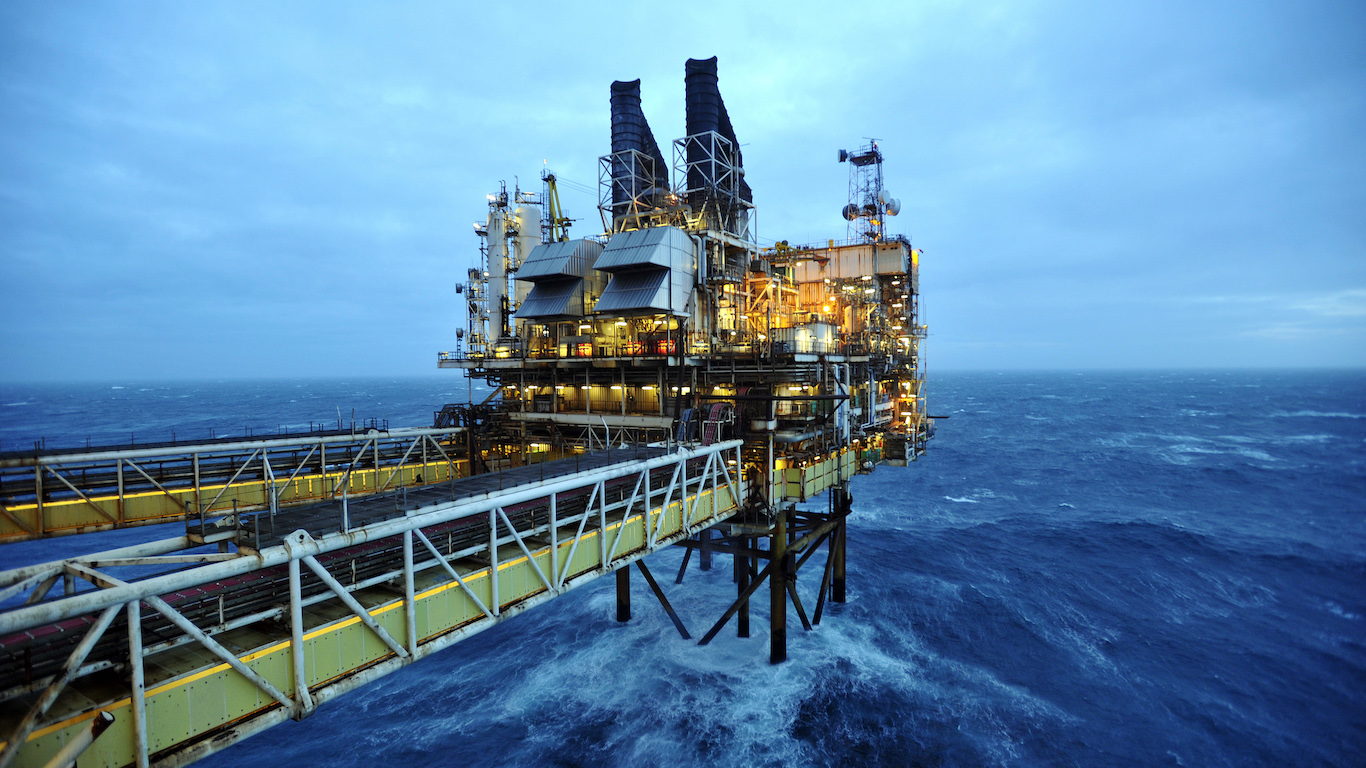
BP PLC (NYSE: BP) reported fourth-quarter and full-year 2019 results before markets opened Tuesday. For the quarter, the oil and gas supermajor posted adjusted diluted earnings per American depositary share (ADS) of $0.76 on sales and operating revenues of $71.11 billion. In the same period a year ago, the company reported earnings per ADS of $1.04 on revenues of $75.68 billion. Analysts had estimated earnings per ADS of $0.65 and revenues of $66.44 billion. One ADS is equal to six ordinary shares.
For the full year, BP reported earnings per ADS of $2.95, down from 2018’s total of $3.82. Analysts had expected earnings of $2.90 per ADS. Revenues for the year totaled $278.4 billion, down from $298.76 in 2018. The consensus estimate was $275.53 billion.
Replacement cost (RC) loss (essentially net income) totaled $19 million, compared to an RC profit of $766 million in the year-ago quarter. Underlying RC profit (adjusted net income) totaled $2.57 billion in the quarter, well short of last year’s gain of $3.48 billion in the quarter.
The company said that underlying RC profit was largely the result of a “weaker environment.” BP also took after-tax impairment charges of $2.8 billion related to the disposal of U.S. natural gas assets and reclassification of past foreign exchange losses following the formation of its new biofuels joint venture.
Excluding payments for the 2010 Gulf of Mexico spill, operating cash flow increased from $6.62 billion in the fourth quarter of 2018 to $7.6 billion. The total includes $200 million released to working capital in the fourth quarter. BP paid an after-tax total of $42 million in the quarter in scheduled payments for the Gulf of Mexico spill. For the full year, payments related to the 2010 disaster totaled $28.2 billion, compared to payments totaling $26.1 billion in 2018.
CEO Bob Dudley said:
BP is performing well, with safe and reliable operations, continued strategic progress and strong cash delivery. This all supports our commitment to growing distributions to shareholders over the long term and the dividend rise we announced today. After almost ten years, this is now my last quarter as CEO. In that time, we have achieved a huge amount together and I am proud to be handing over a safer and stronger BP to Bernard and his team. I am confident that under their leadership, BP will continue to successfully navigate the rapidly-changing energy landscape.
The company’s upstream group posted an adjusted net profit of $614 million, sharply lower than the $4.17 billion reported in the fourth quarter of 2018. BP attributed the drop to lower price realizations partially offset by higher production. Excluding those charges, underlying profit in the quarter totaled $2.68 billion, compared with a profit of $3.89 billion in the year-ago quarter. Daily production during the quarter totaled 2.7 million barrels of oil equivalent, up 2.7% year over year. BP’s realized price for liquids fell from $61.80 a barrel in the fourth quarter of 2018 to $55.90. The company expects first-quarter production to be lower as it continues to divest assets and due to planned maintenance and turnaround.
Downstream (refining) pretax profits decreased by about 33% year over year to $1.43 billion. On an adjusted basis, refining profits decreased from $2.17 billion a year ago to $1.44 billion. BP’s refining marker margin was $12.40 a barrel, up from $11.00 a year ago and down from $14.70 in the third quarter of this year. The outlook for the current quarter calls for lower levels of industry refining margins and wider North American heavy crude oil discounts compared with the fourth quarter.
BP’s organic capital spending totaled $4 billion in the fourth quarter, down from $4.4 billion in the year-ago quarter. For the year, capital expenditures totaled $15.2 billion, roughly equal to spending of $15.1 billion in 2018.
As in the third quarter, analysts did not expect much from BP and the company delivered earnings and revenues that beat those low expectations. The company also boosted its dividend from $0.615 per ADS to $0.63. Perhaps that’s the reason investors are bidding the shares higher in Monday’s premarket. At Monday’s closing price of $35.23, the stock’s dividend yield was 6.81%.
Analysts have forecast first-quarter earnings of $0.82 per ADS on sales of $68.96 billion. For the 2020 fiscal year, the consensus earnings estimate is $3.43 per ADS and sales of $272.53 billion.
A new CEO and a higher dividend appear to have outweighed what would have been a lousy quarter for earnings and sales, if analysts had not lowered the bar so far.
BP’s ADSs closed down about 2.5% on Monday, in a 52-week range of $35.07 to $45.38. They traded up 4.7% in Tuesday’s premarket session to $36.87. The 12-month consensus price target was $48.02 before Tuesday’s report.
It’s Your Money, Your Future—Own It (sponsor)
Retirement can be daunting, but it doesn’t need to be.
Imagine having an expert in your corner to help you with your financial goals. Someone to help you determine if you’re ahead, behind, or right on track. With SmartAsset, that’s not just a dream—it’s reality. This free tool connects you with pre-screened financial advisors who work in your best interests. It’s quick, it’s easy, so take the leap today and start planning smarter!
Don’t waste another minute; get started right here and help your retirement dreams become a retirement reality.
Thank you for reading! Have some feedback for us?
Contact the 24/7 Wall St. editorial team.
 24/7 Wall St.
24/7 Wall St.



